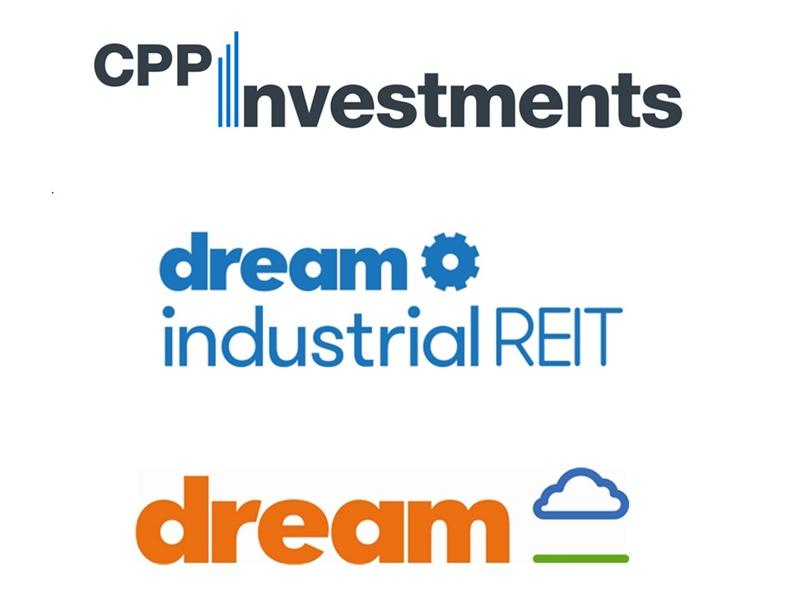
Courtney Cooper is a principal at Alate Partners. (Image courtesy Alate)
The great increase in office employees working from home due to COVID-19 spurred the adoption and implementation of technology to accommodate it, but that’s just one way property technology (proptech) is advancing these days.
A Jan. 13 webinar moderated by EY Canada partner Stephanie Lamont and assurance partner Mark Vrooman featured four panelists heavily involved in proptech discussing its role in commercial real estate.
Many companies had to pivot last March, following COVID-19-related business shutdowns, and look at their immediate needs before concentrating on longer-term proptech strategies. The initial focus was on making sure an effective virtual working experience was in place and people could safely interact with each other.
“There has been increasing demand for digital solutions across all asset classes and across the value chain,’ said Courtney Cooper, principal for Alate Partners, which works with companies developing technology to reimagine how buildings are designed, built and managed.
“We’ve never had a moment in history where every single company had to rethink how they work, and how they work collaboratively remotely.”
Cadillac Fairview had just transitioned to a new enterprise resource planning (ERP) software to manage its day-to-day business activities when the pandemic hit.
It moved from a system that had been in place for more than 20 years – and which was internally developed, managed and customized for every user – to a cloud-based system the company had to figure out how to integrate into its operations.
While it was a challenge, finance transformation head Moe Ladha said it paid immediate benefits.
“We found that the move to a cloud-based ERP made that transition in March easier for people to connect and perform outside of the office in a manner that they may not otherwise have been able to do.”
Getting people to return to the office
Last spring and summer, companies invested in technology to solve an immediate need. Cooper said firms are now rethinking how they operate, both digitally and when they can bring people safely back to the office.
Colliers Proptech Accelerator Powered by Techstars managing director Ben Liao cited a Colliers survey which showed a decrease in productivity four to six months after office employees continued working from home. So, it’s important to find safe ways of getting at least some of them back into offices.
“We have to upgrade the digital capabilities of our in-place buildings,” said Oxford Properties chief operating officer Dean Hopkins.
“We’re going back over the brownfield and trying to aggressively accelerate the rate at which we’re bringing their digital capabilities up, so that we can take advantage of the benefits that come from being much more digital.”
Hopkins emphasized companies should provide employees with the best tools and processes so they make the best use of their time. The technology should be a means to an end, not the end itself.
“Proptech is in service of something else,” said Hopkins, who was a tech entrepreneur for 27 years before getting into the real estate field. “We view that the contemporary operations of a global real estate firm are powered by technology, but we have to put the operations first.”
There’s a new and growing trend of tech people, like Hopkins, moving into real estate.
Liao said this can help companies embed technology into the “DNA” of their organizations and not view it as a side activity or project. There’s a need for organization-wide mindset changes to get everyone involved and improve efficiency, he added.
Move away from internal tech development
Real estate companies are moving away from developing technologies internally and looking to outside firms for help, sparking an explosion of proptech companies. Liao estimates there are 7,000 proptech firms and said he’s tracking about 4,000 of them.
“There’s a lot more of a maturing technology ecosystem that can support you, and in many cases that makes a lot of sense,” said Cooper. “But, you need to figure out what that strategy is and how you bring all of the technology partners together to help you achieve your goals.”
New technology solutions might not meet every requirement, said Cooper, but work-arounds can be used in the meantime until that’s achieved. It’s also important to consider and embrace new processes along with the technology.
“If you’re just trying to recreate exactly the same way you do something with new technology, you may miss out on some benefits,” said Cooper.

Ben Liao, managing director of Colliers Proptech Accelerator Powered by Techstars. (Courtesy Colliers)
Liao’s role with Colliers’ industry-first global real estate innovation program is to identify technology solutions for the real estate industry, which he said lags other business sectors.
“You’re not going to build a 20-person team for every point solution that you need internally,” said Liao, who suggested adopting an internal research and development model where companies can test different solutions to see what best meets their needs.
“Cloud-based solutions provided by third parties are the way forward,” said Hopkins. “We’re no longer going to write our own apps. We’re going to be an integrator of those apps and we’re largely going to focus our energy on the IP (Internet protocol) that comes from data and analytics.”
The proptech community is made up of features, not platforms, according to Hopkins. Therefore, real estate companies need to assemble and collect those features and incorporate them into “more wholesome solutions that take on bigger portions of the problem.”
Ladha said there’s a need for companies to connect and bring different elements together, which requires a new mindset, skills and corporate culture.
Proptech suggestions for newbies
Vrooman concluded the webinar by asking the panelists for suggestions on how companies slow to adopt proptech can get their feet wet:
– “There are no wrong answers and perfection doesn’t matter,” said Hopkins. “Start with data. It’s consuming the most of your people’s time to get data, trust it and figure out how to analyze and do something about it.”
– “Once you have some ability to look at that data and analyze that data and make it more readily available to your people, also look at increasing the velocity in which you’re gathering and moving that data through your platform,” said Ladha.
– “It’s important to look at other industries for technology solutions, the horizontal plays that can apply very instrumental solutions, especially when you think about data and AI (artificial intelligence) that can be applied to real estate,” said Liao. “What you want to do is identify organizations that have a very broad lens, not just on a global level but also across multiple different industries. I think that’s where a big part of the opportunity may lie in the next three to five years.”











